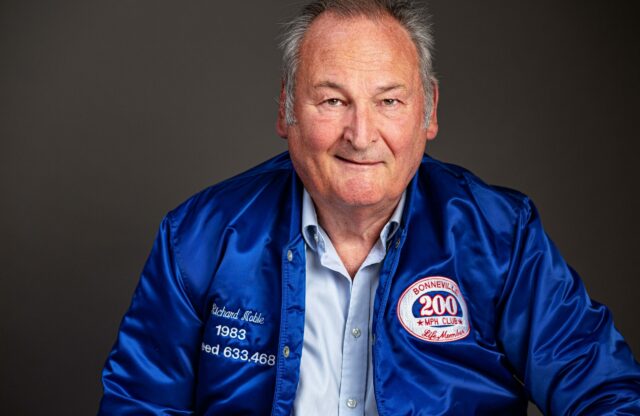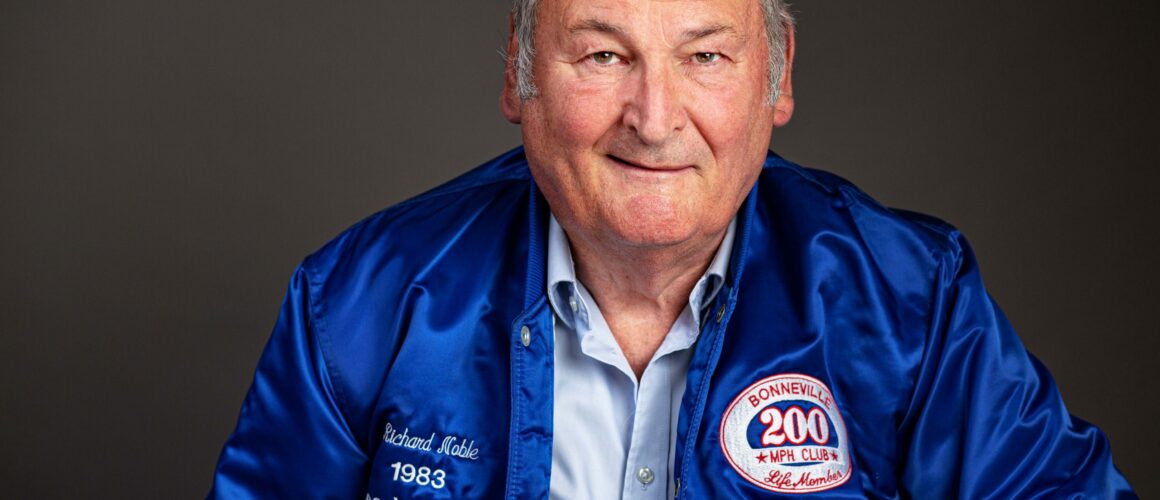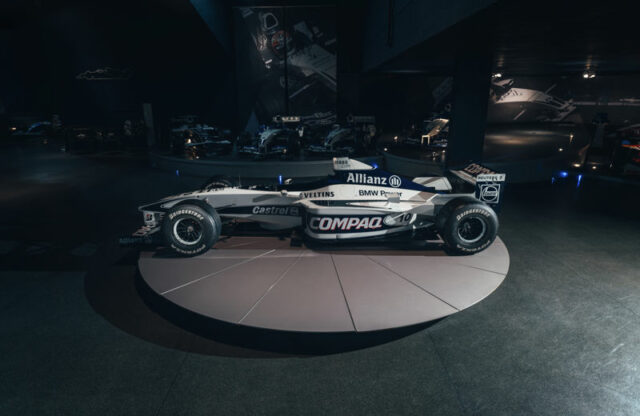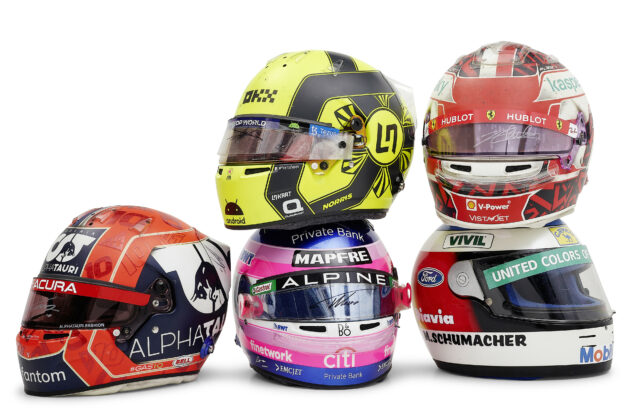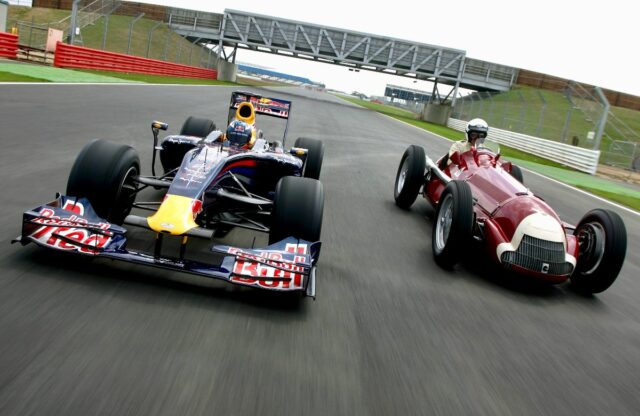Richard Noble’s insatiable quest for speed has come full circle. Best known for his Land Speed Record feats – first claiming the title in 1983 with Thrust 2, and later overseeing Andy Green’s legendary supersonic journey in 1997 with Thrust SSC – his passion for speed began not on land, but on water.
He acknowledges as much in his aptly titled autobiography, Take Risk!: “In September 1952, as a small boy of six, I saw John Cobb’s Crusader Water Speed Record boat at Temple Pier on Loch Ness. This started me on a quest for the Land Speed Record,” he writes.
While Thrust 2 and Thrust SSC remain the milestones of Richard’s career, his name is also tied to Bloodhound SSC, a radical jet-powered car designed to cross the 1000mph threshold. After struggling for funding, the project was rescued in 2018 by Ian Warhurst, who rebranded it as Bloodhound LSR. Sadly, Richard was informed that he would no longer be part of the project.
“I didn’t realise how tired I was after committing more than 50,000 hours to Bloodhound over 12 years,” Richard tells Magneto during a talk hosted by the Brooklands Watch Company at the Brooklands Museum in Surrey. “It was time for a personal break. But I learned a long time ago that early retirement is death, so it was time to decide what to do next.”
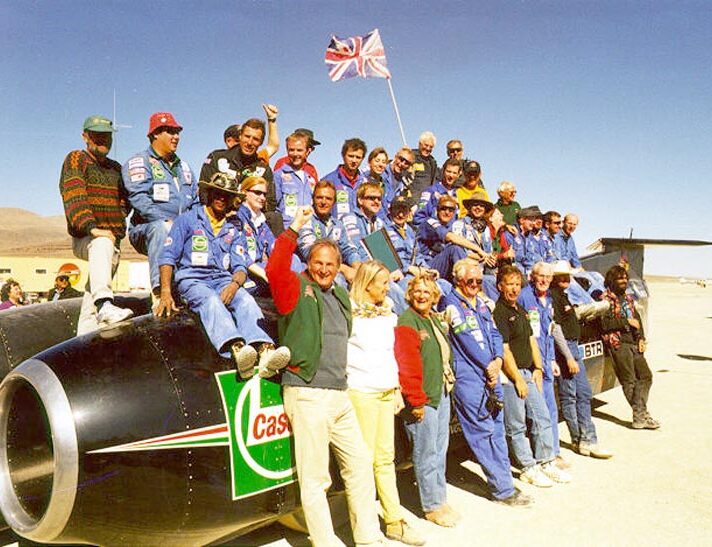
If you’re used to taking risks – as we have done for the past 40 years – then you know what works and you know how to survive
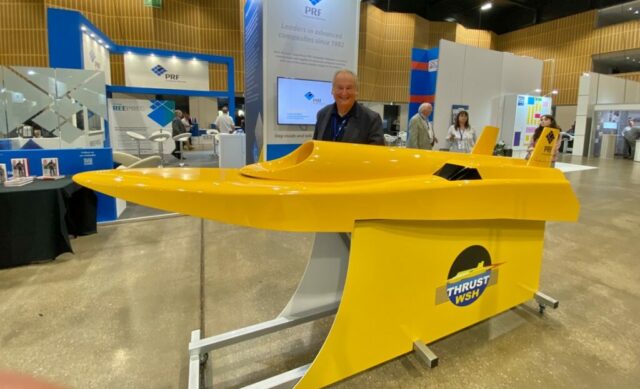
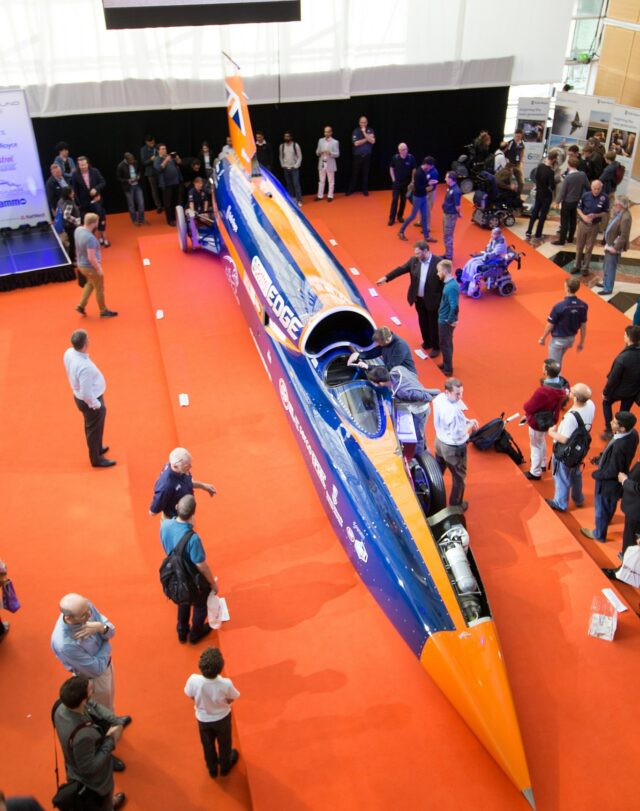
That decision led him back to the water. The purpose of the Brooklands Watch Company’s talk was not only for Richard to share the extraordinary story of his life, but also to highlight his current pursuit: breaking the Water Speed Record with the Thrust Water Speed Hydrofoil (WSH) project.
“Bloodhound was now in other hands, and aviation records are far too expensive, but we realised that the Water Speed Record was a possibility and it could also be done in Britain,” Richard explains.
“But Britain has become completely risk-averse, which is fantastic because that’s exactly what we want. We want to power ahead with a really risky programme to show that this can be done. If you’re used to taking risks – as we have done for the past 40 years – then you know what works and you know how to survive.”
This buccaneering spirit has propelled Richard to the Land Speed Record, across the sound barrier and into the skies. Yet, he knows better than anyone that daring alone is tantamount to recklessness without the bedrock of meticulous research and innovative engineering.
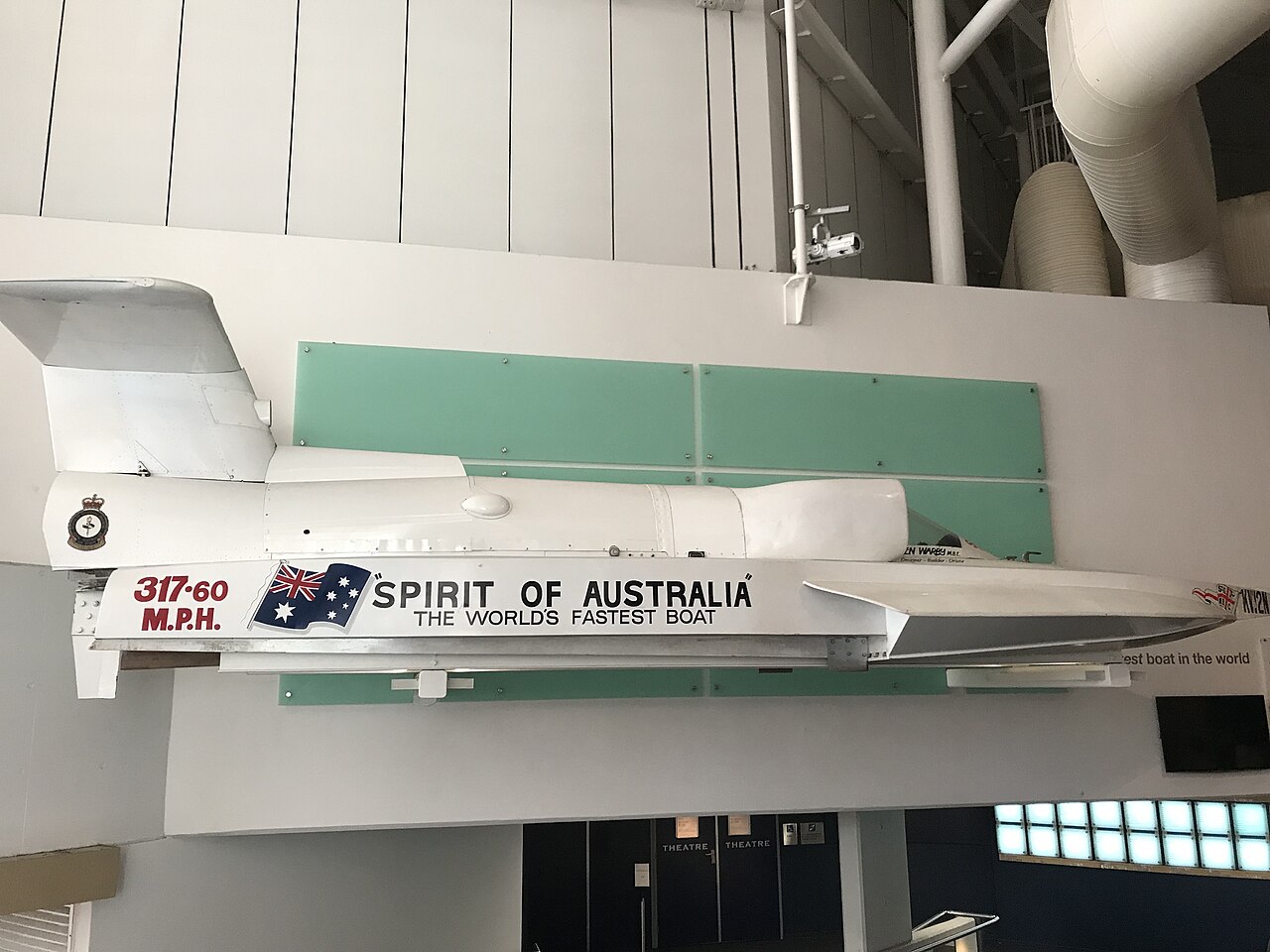
“The Water Speed Record of 317.6mph has stood since 1978, claiming the lives of the last two challengers who dared to break it. And, of course, it cost John Cobb and Donald Campbell – both truly courageous men – their lives,” Richard says solemnly.
In other words, breaking the Water Speed Record is an immense challenge, fraught with danger. That’s precisely why Australian Ken Warby’s 317mph record has remained unbroken for more than 40 years. So, how do Richard and his team aim to finally claim the record?
“The Water Speed Record is seen as highly dangerous and that, from our point of view, is absolutely ideal. Because, like the supersonic record, we can offset the risk and danger by using advanced technology and cutting-edge design,” he says confidently. “Campbell and Cobb didn’t have the kind of technology that we have today, so they were both taking enormous risks in their record attempts.”
Advanced technology has led Richard and the design team to follow a completely different philosophy for the design of Thrust WSH. Previous record-breakers, such as Donald Campbell’s Bluebird K7 and Ken Warby’s Spirit of Australia, are hydroplanes, whereas Thrust WSH is a hydrofoil design.
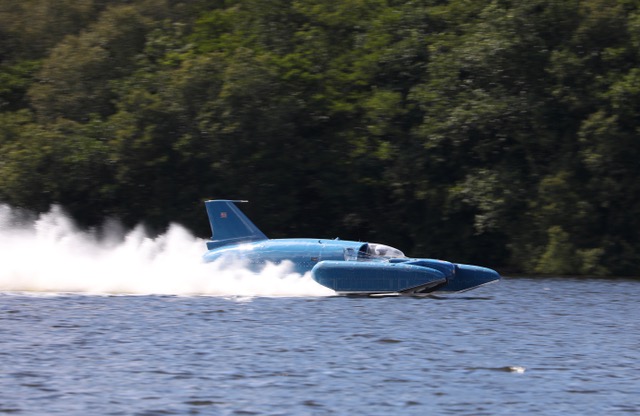
“A hydroplane is essentially a boat that skims across the water, relying on high-pressure forces beneath it. The challenge is that while the jet engine generates a fixed amount of thrust that pushes the nose down, the lift on the underside increases with the square of speed – narrowing the safety margins.
“Interestingly enough, the official accident report into Donald Campbell’s Bluebird K7 crash suggests that the accident was caused by a loss of power. If that’s the case, then the engine wouldn’t have been pushing down the nose and that would have caused the boat to flip over.
“Our friends at Leeds University highlighted this issue, calculating that at 400mph, the critical pitch angle – the point at which the boat would take off – is less than one degree. That was the moment we realised a hydroplane design was simply too dangerous, and that we had to look at this differently,” Richard reveals.
This realisation led him and his team to pursue a very hight-tech hydrofoil design to mitigate the risk. “The next generation of boats will basically have to have a very fast-acting system that stops the bow going up in a matter of microseconds. This system has to be very powerful, and it must be done with water rather than a wing because water is 800 times denser than air.
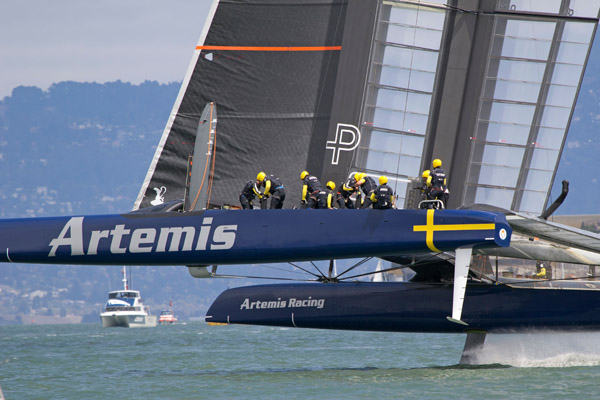
“That’s when we realised that the answer was some kind of hydrofoil. The fundamental problem with hydrofoils, however, is that if the boat goes faster than 60-70mph, then you get cavitation on the upper surface of the foil on the wing underwater that will cause the boat to crash.”
Cavitation occurs when a liquid’s pressure drops below its vapour pressure, forming vapour bubbles that disrupt flow. This creates an unstable load on the hydrofoil blade, reducing efficiency and potentially leading to a crash. In essence, cavitation and ‘dirty air’ in motor sport share a common trait – both disrupt fluid flow, causing instability and performance loss.
The solution to this problem is known as supercavitation, which is a phenomenon where a vehicle, such as a torpedo or hydrofoil, creates a bubble of gas around its entire body as it moves through the water. This bubble forms because the vehicle’s speed is so high that it causes the water pressure around it to drop dramatically, turning the water into gas. The effect dramatically reduces drag, allowing the vehicle to move more efficiently at higher speeds.
However, it’s not without its challenges – maintaining supercavitation requires precise control and careful engineering, beause the vehicle must stay within the right speed range to keep the cavitation intact and avoid instability.
In the case of Thrust WSH, supercavitation offers a potential solution to the cavitation problem by effectively eliminating much of the water resistance. This enables the hydrofoil to reach the extreme speeds needed to break the Water Speed Record, while keeping the boat stable and in control.
“On top of creating a supercavitating hydrofoil, we also need to create a system that can control the four foils at a rate of around 100 cycles per second. We’ve been working on this with the robotics division of the University of Leeds, who have been absolutely fantastic,” Richard explains.
The collaboration between the Thrust WSH team and the University of Leeds resulted in the creation of a test model dubbed the ‘Ugly Boat’. “The Ugly Boat is essentially a basic raft powered by an electric fan engine, equipped with all the electronic systems needed to control the foils. We’ve learned a great deal from it and were surprised by how reliable it turned out to be.”
After proving that the hydrofoil concept could work, the team had to source the jet engines that will power their record-breaking machine. Luckily, Richard happened to have a few left over from the Thrust SSC Land Speed Record car.
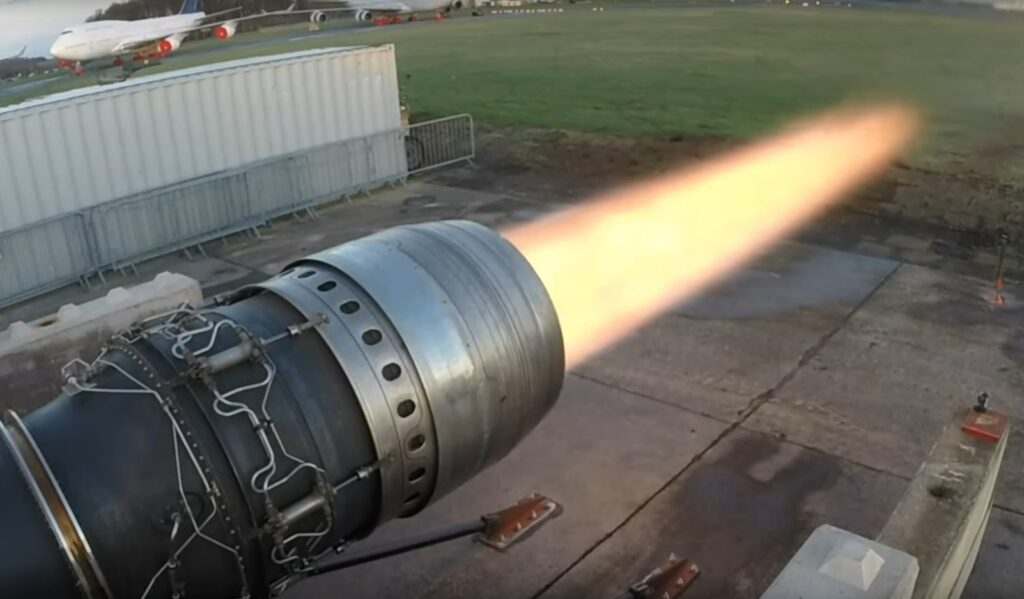
“The next challenge was sorting out the engines. Thrust SSC was powered by two Rolls-Royce Spey 205 engines, which are exceptional due to their single-crystal blades and the ability to generate up to 25,000 pounds of thrust. We have one engine that’s been fully serviced, rebuilt by Rolls-Royce and never flown. That’s the one we’ll be using.”
Sustainability also became a key consideration. “A massive jet engine that shoots 30 feet of flame isn’t exactly sustainable, but in our case, it is because we’re running it on sustainable Firefly jet fuel. Firefly has taken 25 years to develop and it’s made from human sewage.”
With the boat’s design and engine settled, the team created a scale model of Thrust WSH, combining aerodynamic and hydrodynamic CFD modelling to ensure the full-size boat will be safe and controllable at 450mph. This target was chosen because four rival teams are currently working on their own Water Speed Record attempts, including David Warby, son of the current record holder, Ken Warby.
“The model is powered by a Lynx drone jet engine and we expect it to reach around 225mph,” Richard continues. “We’ve faced all sorts of challenges building something like this – it’s incredibly complicated. A three-mile test run on water is planned this spring. If we get a good result then we will move on to the next stage, which is the structural design and construction of the full-size boat.
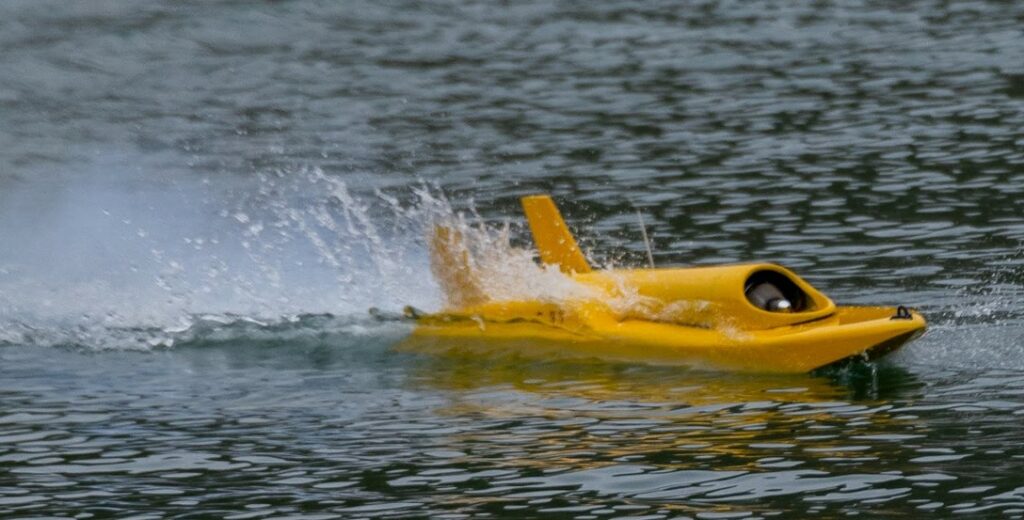
“Even the model is a hell of a thing,” he emphasises. “It’s ten feet long and is jam-packed with all the equipment for data collection; it has a radio remote shutdown system and it also has GPS range control called geofencing, which means that if it leaves a pre-determined area of the loch, then it will shut down. It’s a big gamble – no one else has done anything like this before.”
British engineering is at the heart of Thrust WSH, and local expertise is essential for pushing the boundaries of technology and design needed to create a safe and successful Water Speed Record boat. The UK’s history of engineering innovation has been instrumental in Richard’s breathtaking pursuits, and his vision for Thrust WSH is no different.
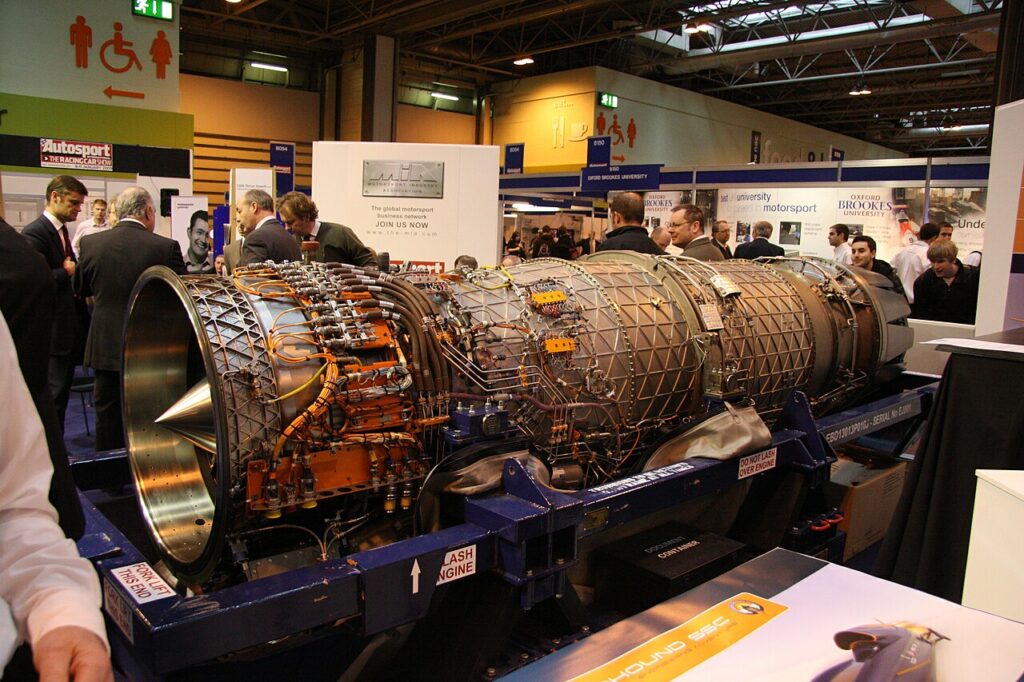
Yet, Richard sees British engineering’s future under threat – making this project, as with Bloodhound before it, is as much about inspiring the next generation of engineers and safeguarding UK manufacturing as it is about rewriting history.
“This country needs growth. And it’s not the City that drives growth, but it’s manufacturing. Unfortunately, we seem to have given the majority of our manufacturing away to the Chinese. Back in the 1960s, manufacturing was 20 percent of GDP. Today, manufacturing is nine percent of GDP, which is about the same as the City achieves. The potential is right there – this is a fantastic country that is capable of some truly incredible innovation.”
He highlights a crucial issue: manufacturing is often perceived as dirty, manual work, and companies are struggling to attract young talent, who are “voting with their feet”, as he puts it. Richard believes the industry has failed to make manufacturing exciting and engaging for the next generation, which has led to a decline in interest. “We must get the next generation interested in making things,” he insists.
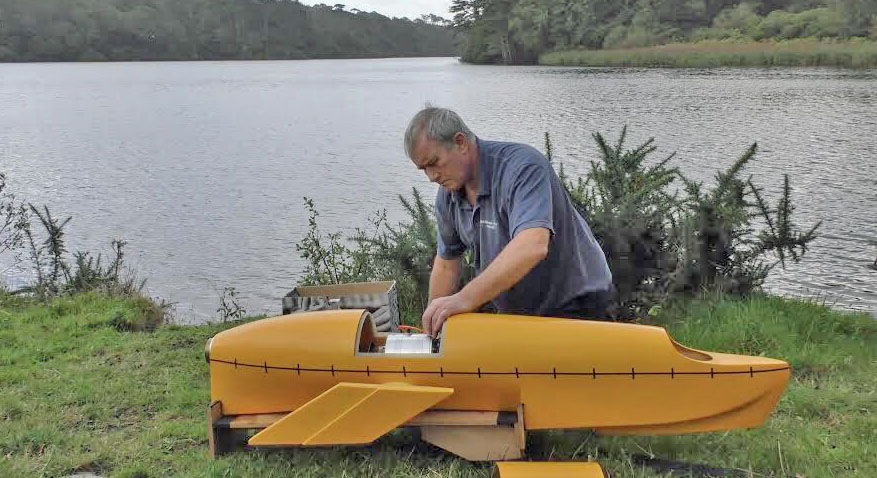
To counter this, Richard and the team are developing an education programme as part of the Thrust WSH project. This initiative will focus on engaging young minds with engineering and technology, offering opportunities for practical learning.
“We think the Thrust WSH education programme will catch on in a big way – particularly because people will be able to come to Scotland and see the boat actually run,” Richard says. “This project is about more than just breaking records. It’s about showing what Britain can do, and it’s about inspiring the next generation of engineers who will continue to push the boundaries of possibility.”
It’s incredibly fitting that Richard will likely end his record-breaking career by inspiring young people gazing at this incredible, cutting-edge machine on water, just as he had been as a six-year-old in 1952.
